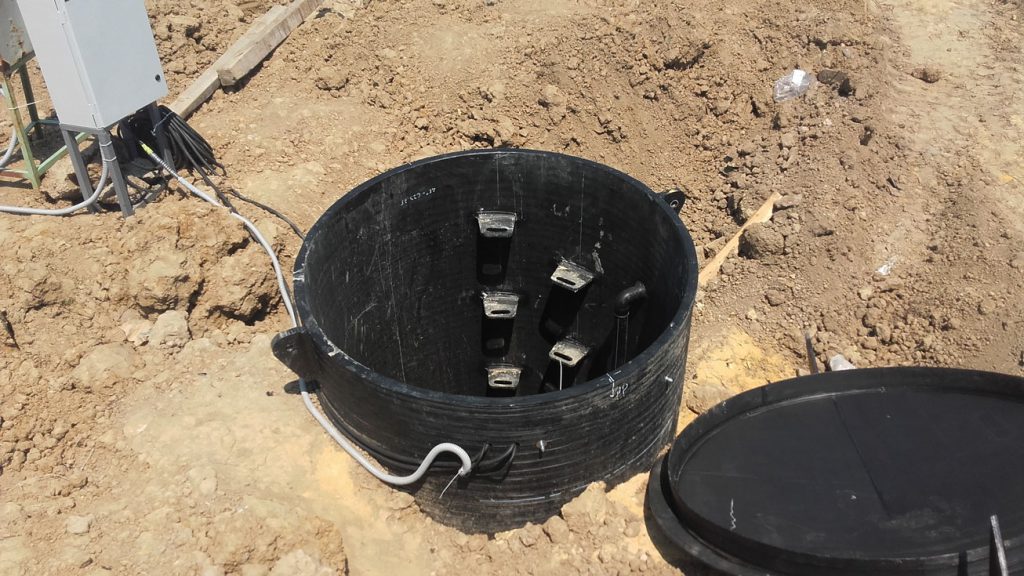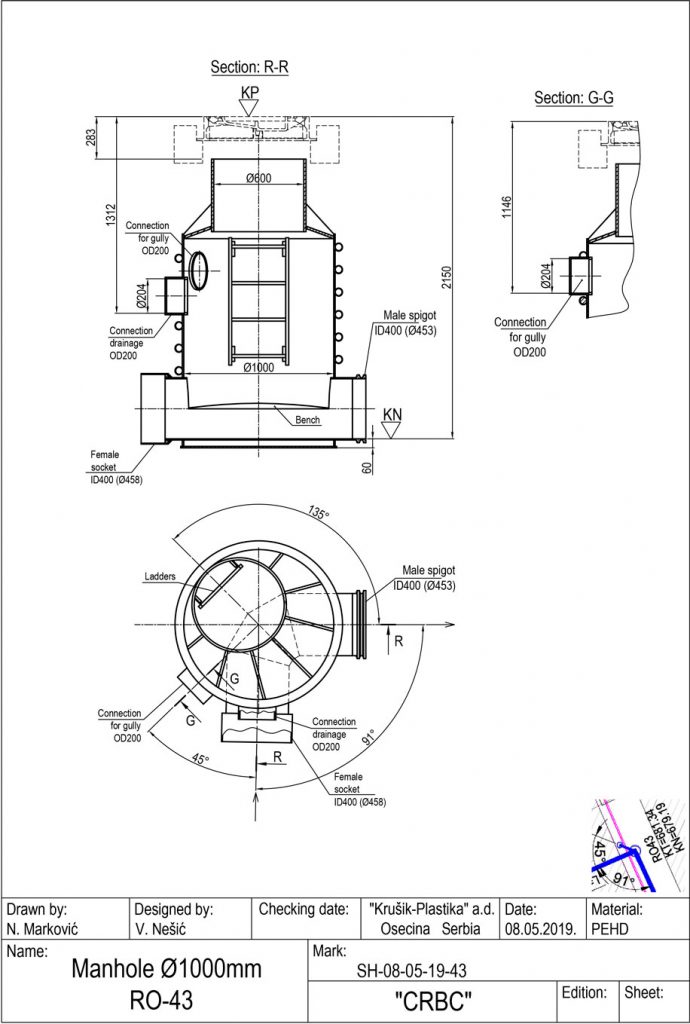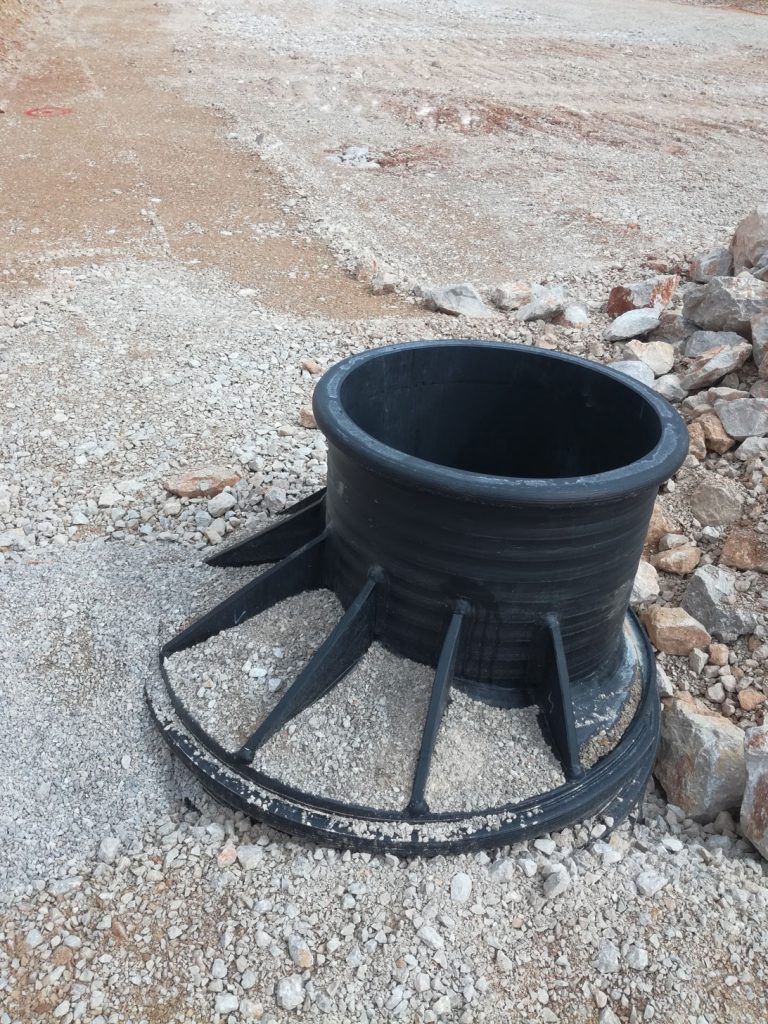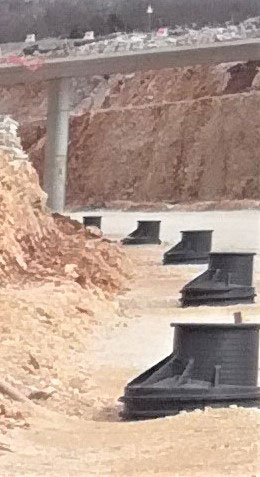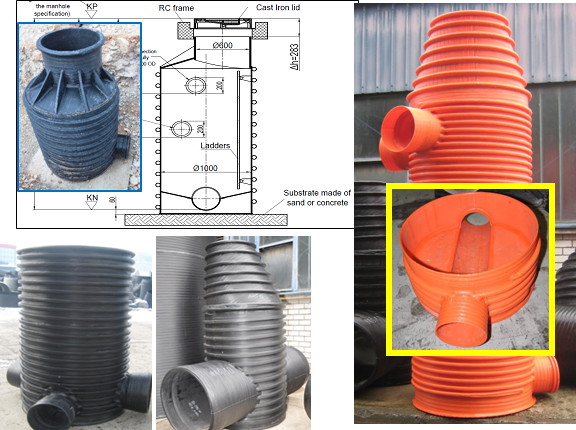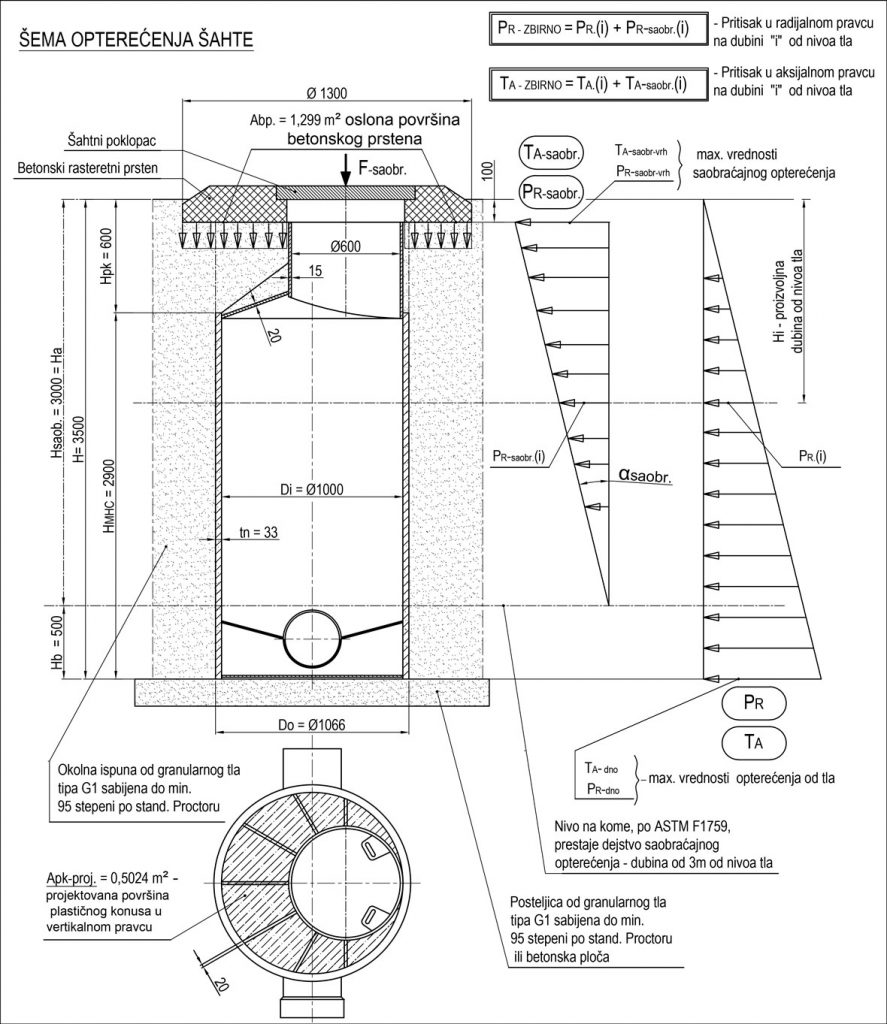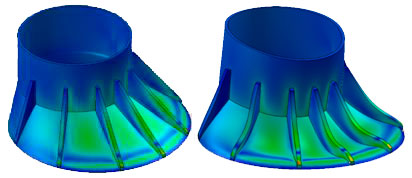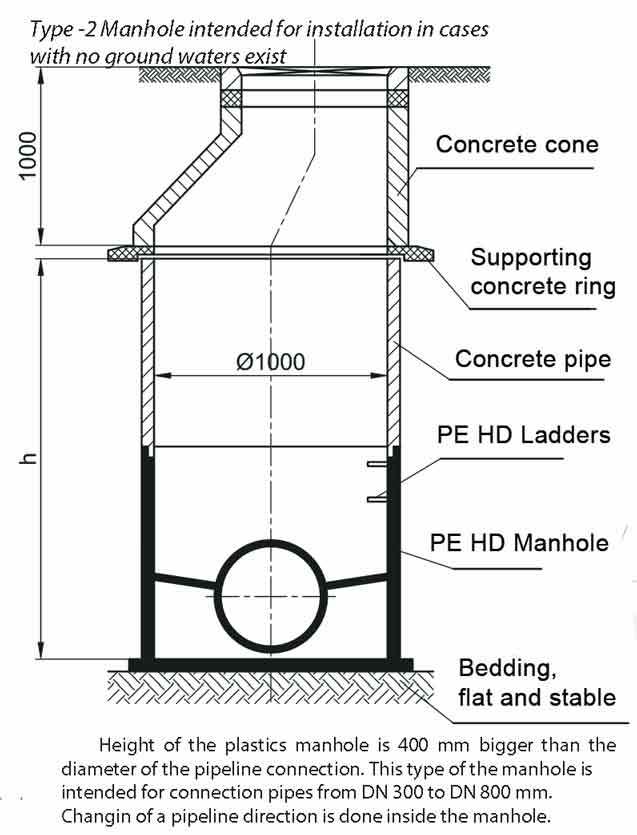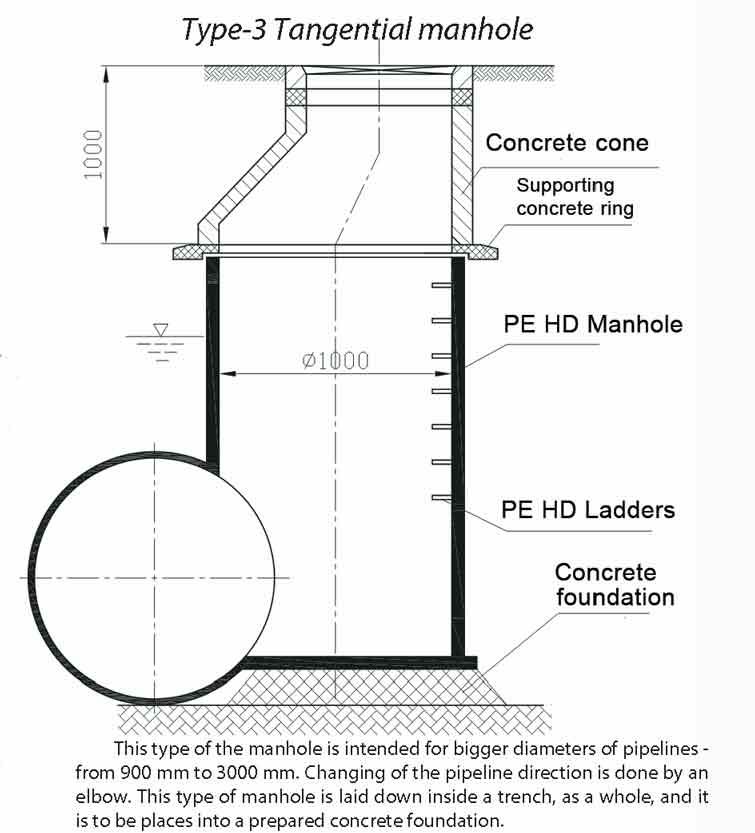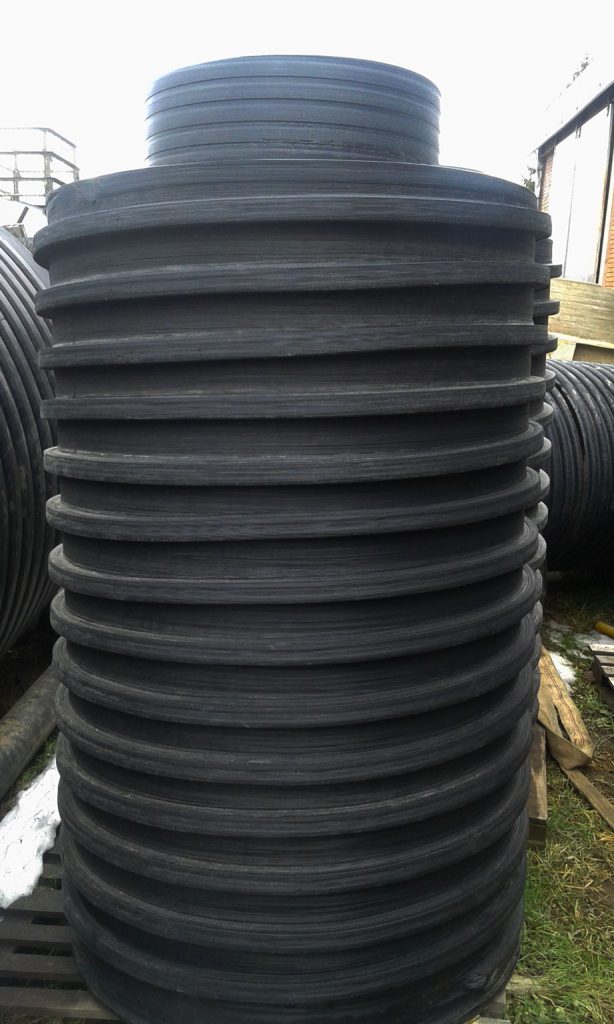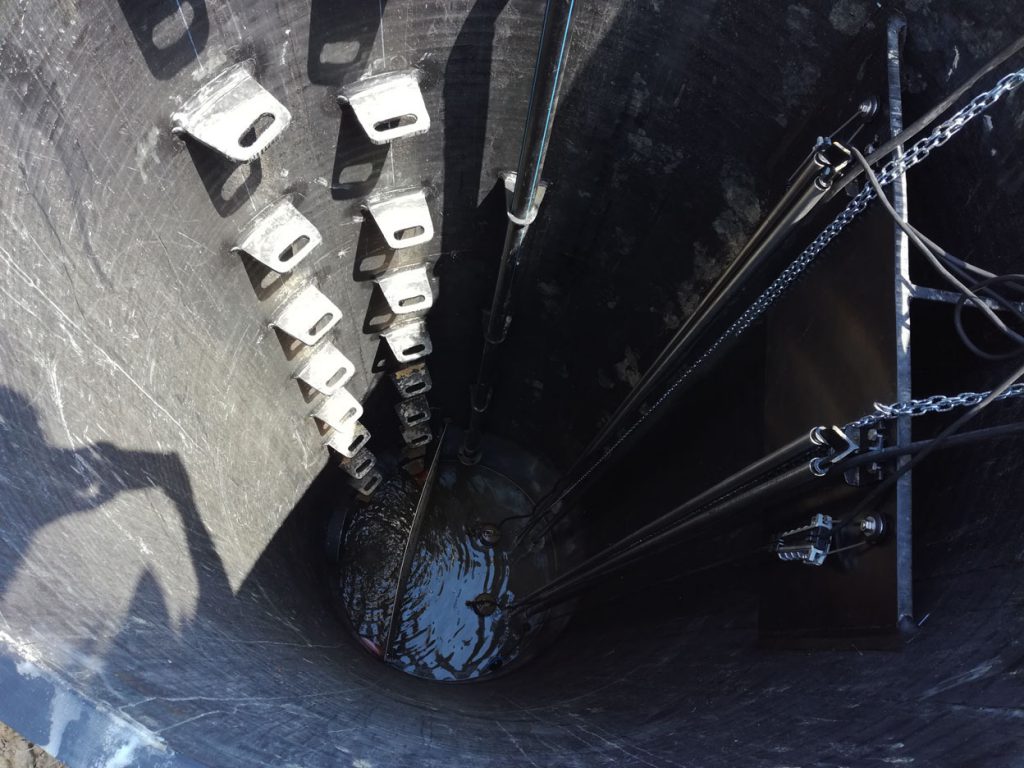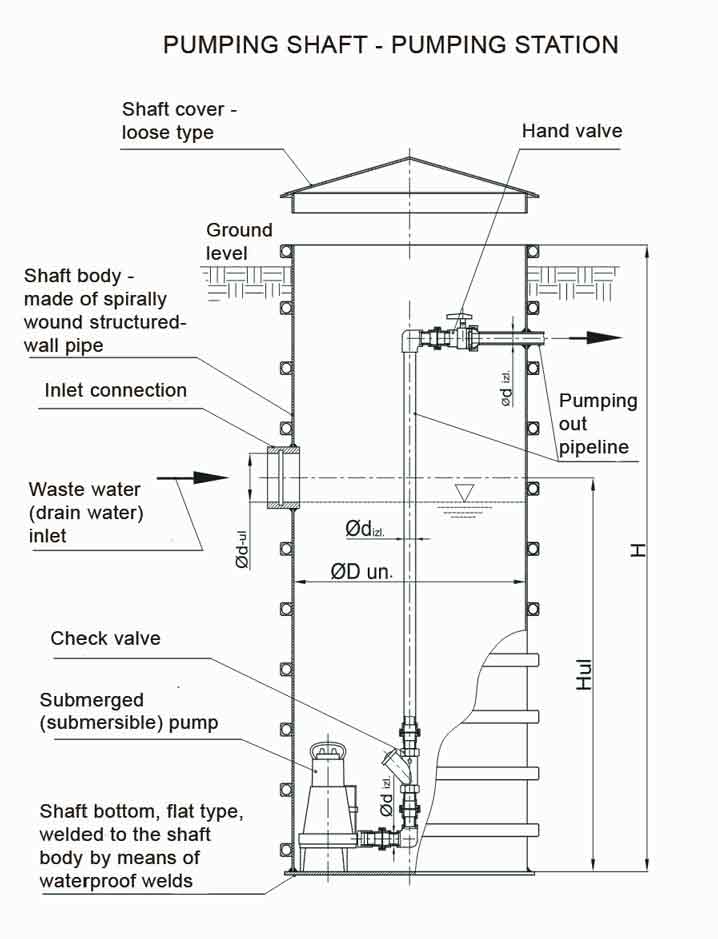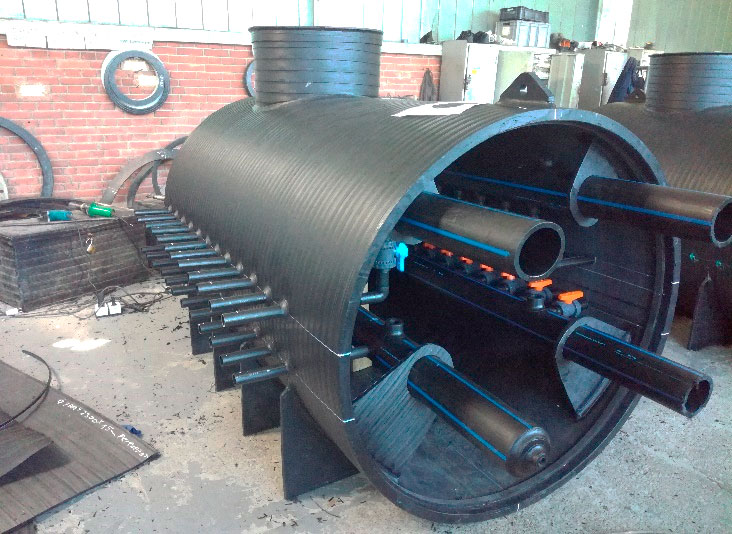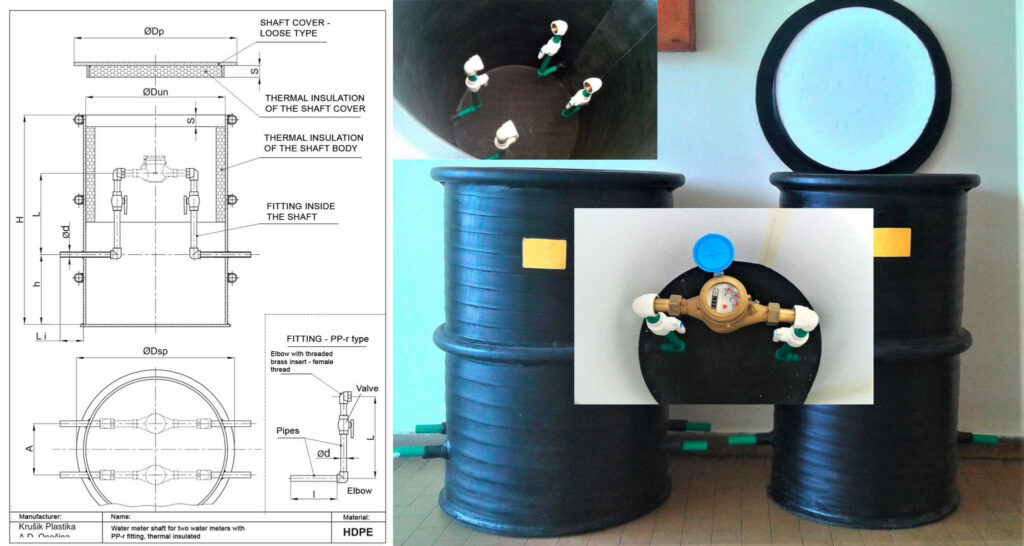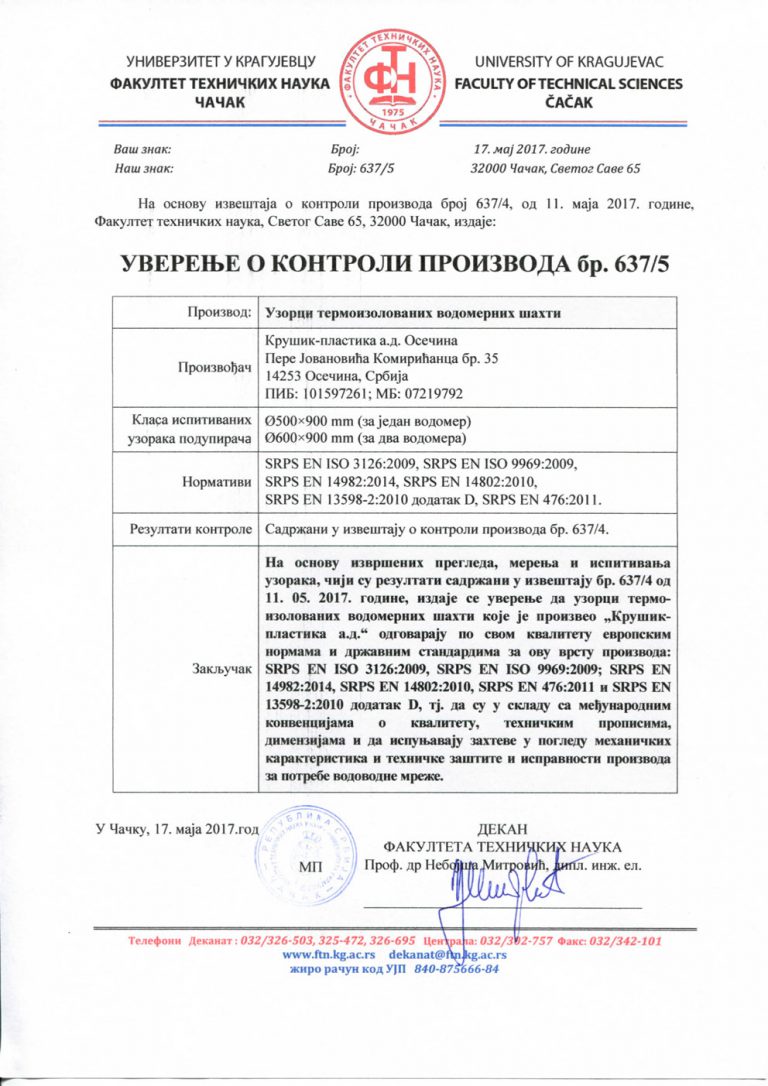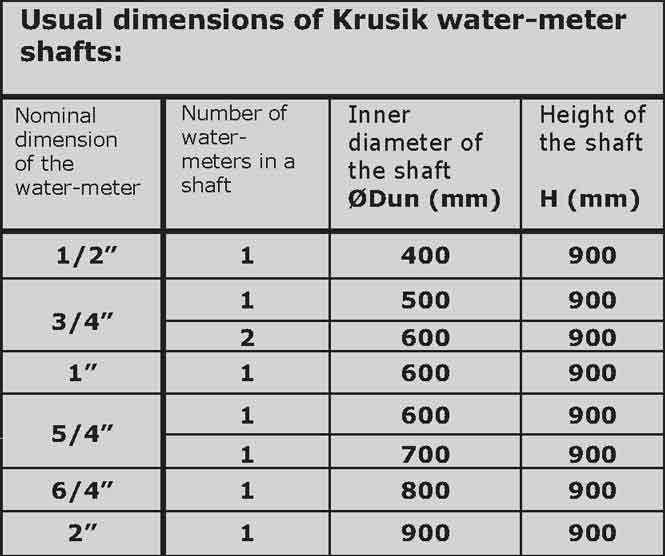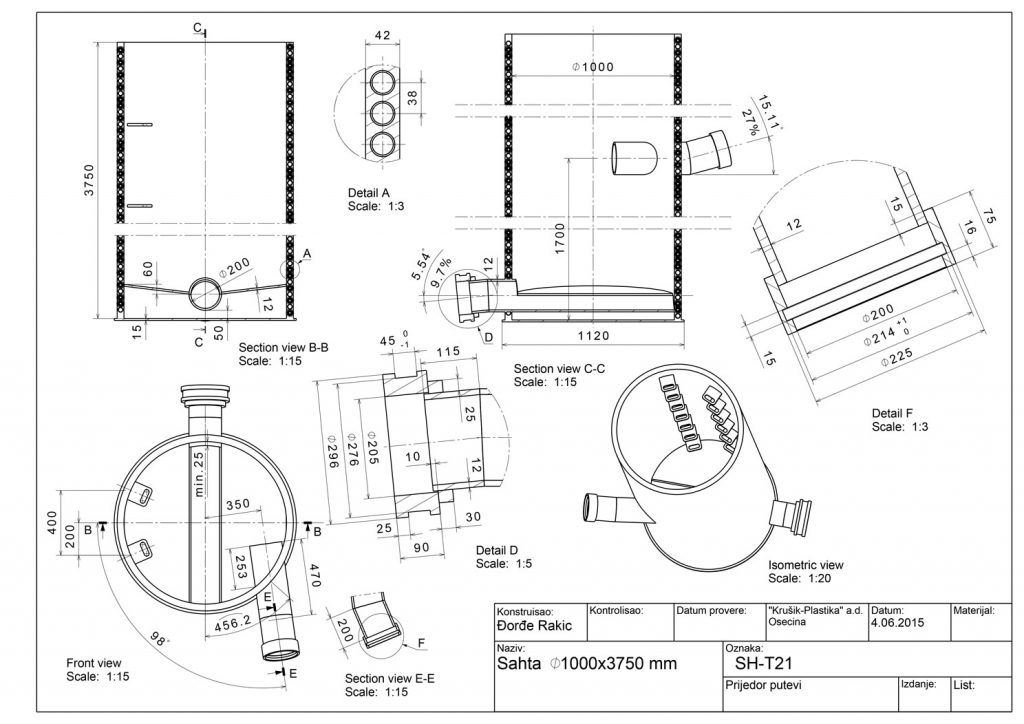KRUŠIK-SPIRAL MANHOLES, SHAFTS AND INSPECTION CHAMBERS
MANHOLES, SHAFTS and INSPECTION CHAMBERS are inevitable constitutive elements of sewage systems, regardless whether they are waste waters, rainfall or draining sewages. Manholes are mainly placed in some specific points of the pipeline in the sewages. Generally speaking, those are the points where the pipeline changes its direction, a slope or a diameter, as well as the places where the pipeline branches, i.e. the places where several pipes join into one point.
Besides these specific points, manholes are also placed on the spots along the pipeline at the approximately even distances which are defined by design conditions. In that case the function of the manholes is to compensate potential sudden increases of mass-flow, and they also enable access to the pipeline for purposes of potential unclogging or purging.
There are four basic types of Krušik spiral sewage manholes by their application:
- Krusik spiral plastics sewage manholes;
- Pumping shafts (pumping stations);
- Protective shafts and,
- Calming (soothing) shafts.
Plastic sewage manholes
Krušik spiral plastics sewage manholes are designed and manufactured in accordance with EN 13598-2. Thanks to their design, flexibility of manufacturing and material they are made of, they are very suitable for all the mentioned functions because they provide an easy, fast and safe access for the needs of inspections and interventions as purging of clogged pipelines and potential repairs of pipes. The manholes are easy to handle and simple for instalation.
The body of the Krušik spiral sewage manhole is made of our spirally-wound plastic pipe, while the rest of the constitutive parts of the manhole, such as inlet and outlet fittings, the bottom and the bench are fixed to the body by welding with totally watertight welds (seams). Such a combination of materials and manufacturing method results in the fact that using our manholes eliminates porosity and leakage of the manholes. In that ways it is possible to eliminate problems which could cause leakage and spillage of waste waters into the surrounding soil as well as a consequent contamination. The manholes are manufactured in the same range of diameters as our pipes – the inner diameter ID from 300 to 3200 mm.
The wall thickness, the strength and the ring stiffness of the manholes can be either chosen according to EN 13598-2, or calculated for each single case and burial conditions (depth, the type of surrounding soil, ground water, external loads…) in accordance with internationally accepted norms ASTM F 1759 and EN 1778.
There are four basic types of Krušik spiral sewage manholes, depending on design, situation on-site and the way of application:
Any type of standard (normalized) inlet/outlet fittings can be built in the Krušik spiral manholes, so that they can adapt themselves to any pipe types (spirally-wound pipes, corrugated pipes, solid-wall pipes… ). Besides, the fittings can be placed at any position on the manhole, by depth and by the angle, so that they can be totally adapted to the specific needs of any project.
The inside surfaces of our manholes are quite smooth. Constituent parts of each manhole, such as a bench, a bottom, inlet and outlet connections, are welded to the manhole body by means of watertight welds.
We are also able to install different types of accessory elements inside our manholes such as ladders, tide gates (flap gates), handles, lugs, supports etc.
Given that it is practically an individual production, 100% internal control of each manufactured plastic manhole is carried out in terms of dimensions and watertightness, and if necessary, and for larger series, more detailed tests are carried out by authorized state institutions – extensive (annular) testing, stiffness of the shaft body, then axial load capacity etc., and in accordance with EN 13598-2.
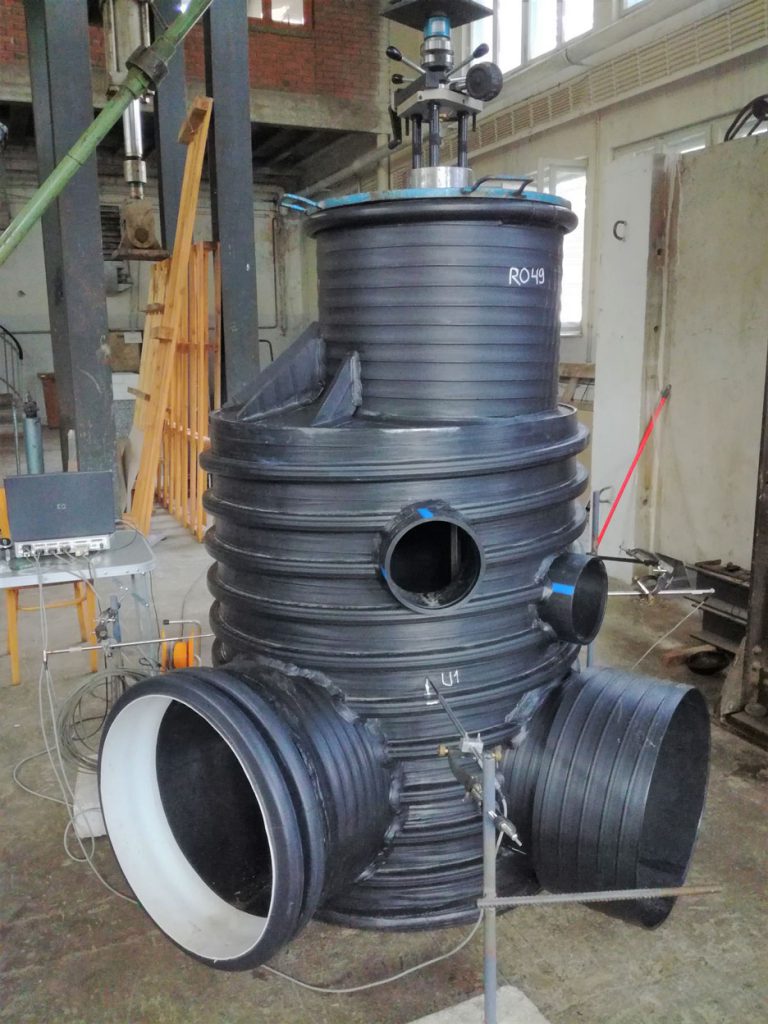
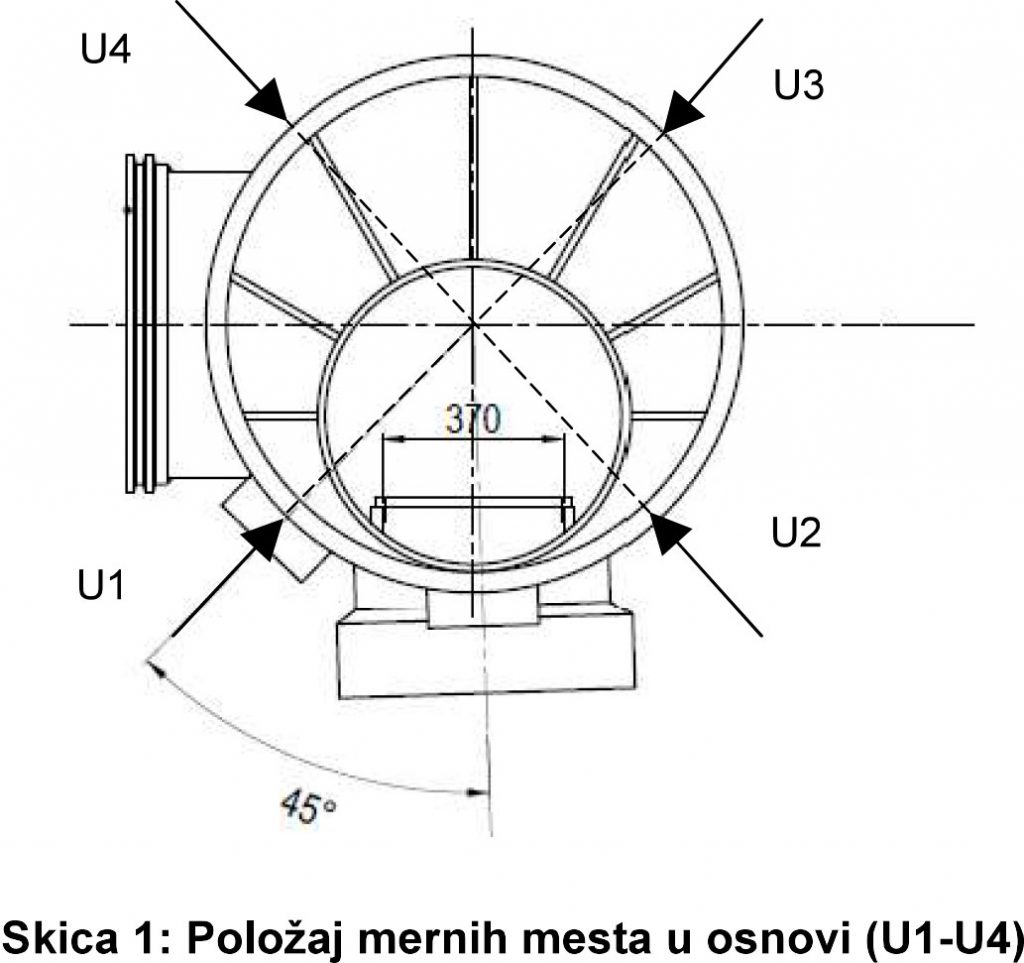
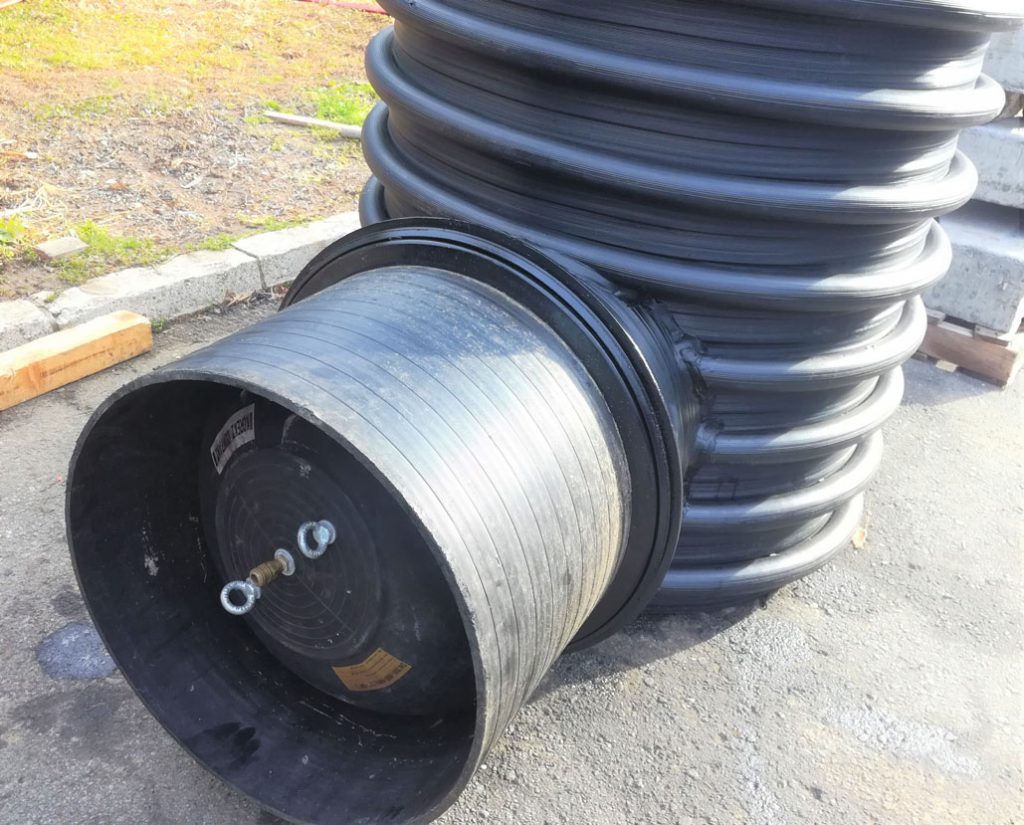

The flexibility of our overall manufacturing process enables us to produce manholes/shafts for various special purposes such as: pumping shafts (pumping stations), protective shafts (water-meter shafts, valve shafts, electic-cable shafts), flow-calming shafts (appeceament shafts), etc.
Krusik pumping shafts (pumping stations)
They are of a similar design as sewage manholes, they also consist of spirally-wound body – cylinder on which the bottom and appropriate fittings are welded. They are also intended for burial, but their function is somewhat different. They serve as pumping-out stations or temporary collectors – they recieve wastewaters from sewage, rainfall or drainage sewages or from industrial wastewaters which flow into the shaft by gravity flow. At the bottom of the shaft the propper pump is placed – this is so called submerged pump, which pumps out collected wastewaters towards the proper common collector. These pumps are also called mud-pumps or faeces pumps, which are used for pumping out of water which contains mud and some rigid and solid particles.
They are usually vertical type but they can also be horizontal.
These shafts are greatly used within the so called low-pressurized sewage system. Low-pressurized sewage system is such a system of drainage of communal wastewaters where the water from a single house, or from several houses or buildings flows into the shaft by gravity flow through household sewage pipes of DN 110 to 160 mm, enters the collection – pumping shaft in which the special mud pump is already installed. This pump turns on automatically in the moment when the wastewaters inside the shaft reach the appropriate level. In a short time the pump throws out almost the entire content of the shaft, forcing it all the way to the common collector, main pumping station or purification plant, through highpressure pipes of diameters from DN 40 to 63 mm. The pump, as has already been stated, operates for a very short period of time and in accordance with that it consumes relatively small amount of energy and it has a long-lasting lifetime.
The advantages of such a sewage system, when compared to classic gravity sewage systems, are as follows:
- they are suitable for application in low-land areas, where it is not easy to obtain a gravity pipeline slope, as well as in mountainous areas, rocky and rigid soils, where digging of large rows for gravity pipelines is quite difficult,
- smaller burial costs, having in mind relatively small diameters of outlet pipelines as well as the fact that there is no need for deep burial – it is quite enough to bury deep enough to prevent freezing inside the outlet pipelines,
- it is easy to adapt outlet pipeline burial to terrain contours as well as to avoid traffic ways and existing infrastructure facilities and objects,
- unlike the gravity sewers, ground waters as well as traffic load have almost negligible influence on the low-pressurized sewage pipelines.
Protective shafts
PROTECTIVE SHAFTS – their main function is protection and an easy access to particular elements that are buried in the ground. The space inside the shaft is protected against outside loads and influences such as ground, water, atmospheric impacts, access of unauthorized individuals, etc.
In the construction industry, depending on what is installed in them, they are most often used as:
- water-meter shafts;
- valve shafts and
- electrical-cable shafts.
They can be vertical and horizontal.
Krusik water-meter shafts
Basically, their construction is very similar to the two previously mentioned types of our shafts, with the difference that they usually have loose plastic lid for the purpose of an easy access to the protected elements. Krusik protective shafts are characterized by an outstandingly easy installation – burial into the ground, a simple connecting to both new and already existing systems as well as a minimal need for maintenance.
They can be vertical or horizontal.
They have the largest commercial application of all the protective shafts, since they can be used for measurement points almost everywhere – in the households, cottages, blocks of flats, residential buildings, companies, industrial plants…
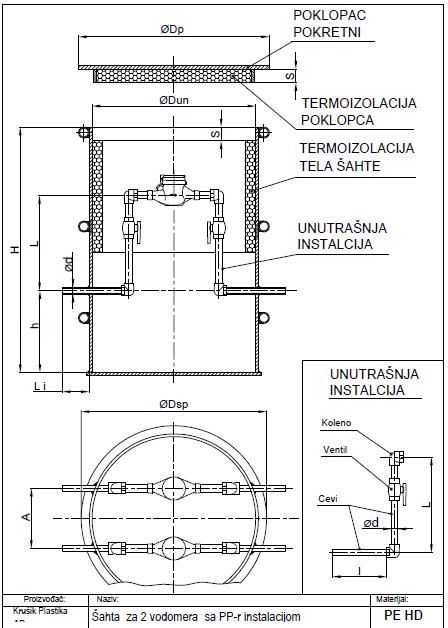
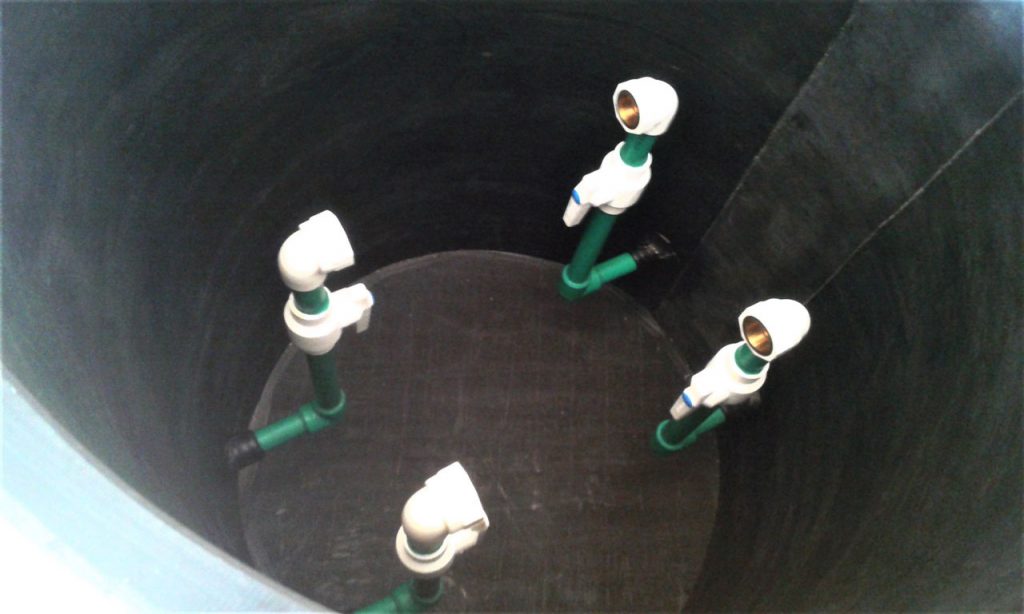
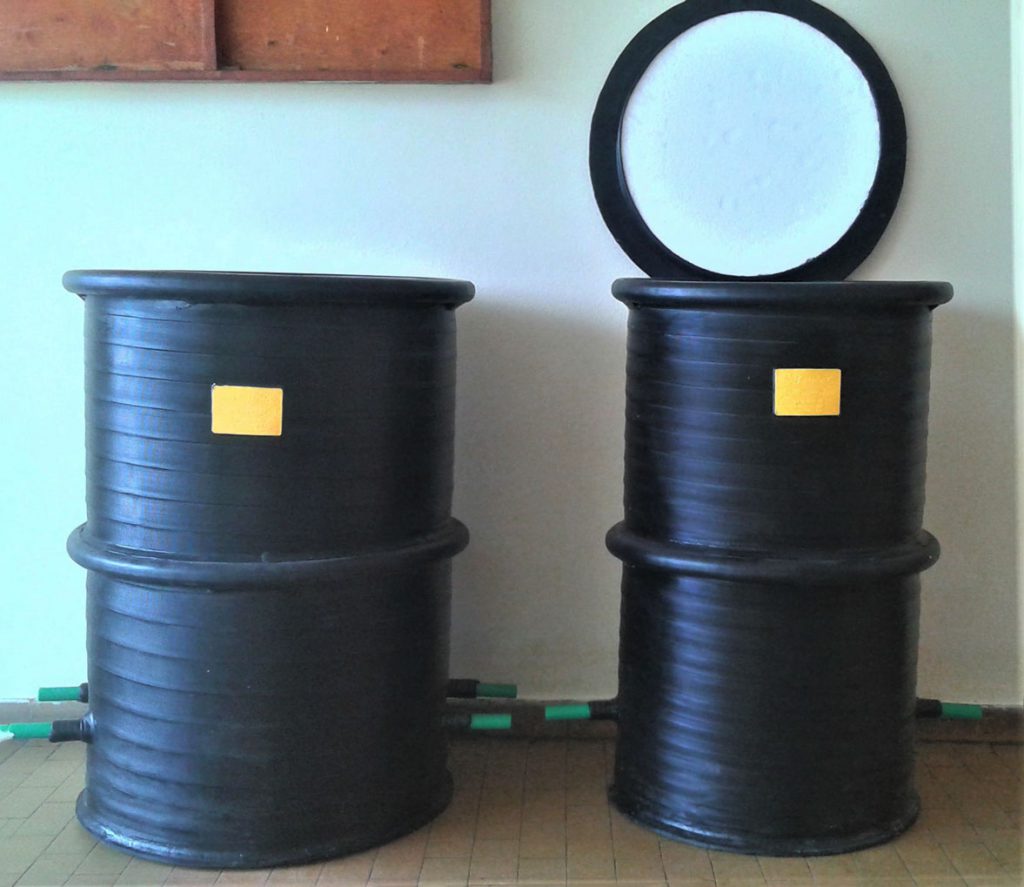
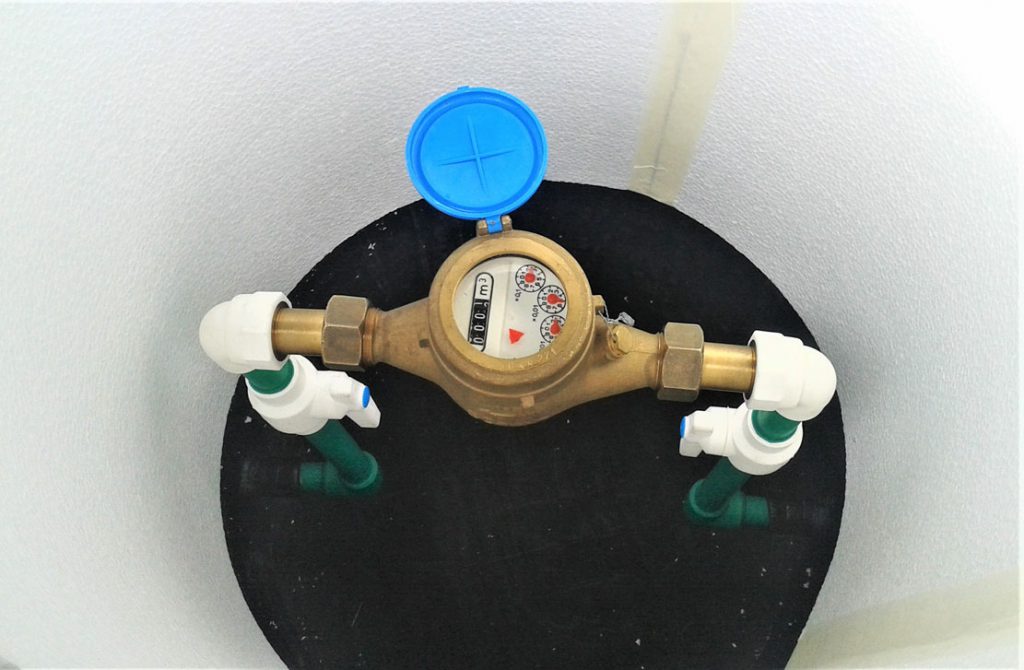
The inner installation (fitting) in Krusik water-meter shafts consists mainly of two valves – front and back valves, then subsidiary elements which are necessary for connecting the watermeter with the valves and the pipeline (couplings, elbows, adapters…) and optionally some additional elements (check-valve, drain-valve, etc.) that might be demanded in the project or by the customer. The fitting can be of any standard type: PP-r elements, press-fit elements, brass elements, galvanized elements…
The shaft dimensions depend on the nominal dimensions and number of water-meters that are built in, and also on the type of fitting (inner installation), thermal insulation, the depth on which the pipeline itself lies as well as the other parameters on site, i.e. the construction project.
Due to our possibility to manufacture them in vast variety of dimensions, the shafts can be used for all types and sizes of commercially standardized water-meters.
Also, thanks to the design possibilities and flexibility of manufacturing, they can be used for one or more watermeters, with or without a bottom, with or without thermal insulation, with or without inner installation – depending on the needs of the customer or the project conditions.
Calming (soothing) shafts
This type of shafts is used with pipelines that have comparatively high altitude difference between the starting and ending parts of the pipeline, in other words on the steep ground. Their function is to reduce the flowing impact and lower the flowing speed.
Flexibility in manufacturing Krusik spiral calming shafts enables their adjustment to any project and working conditions.
